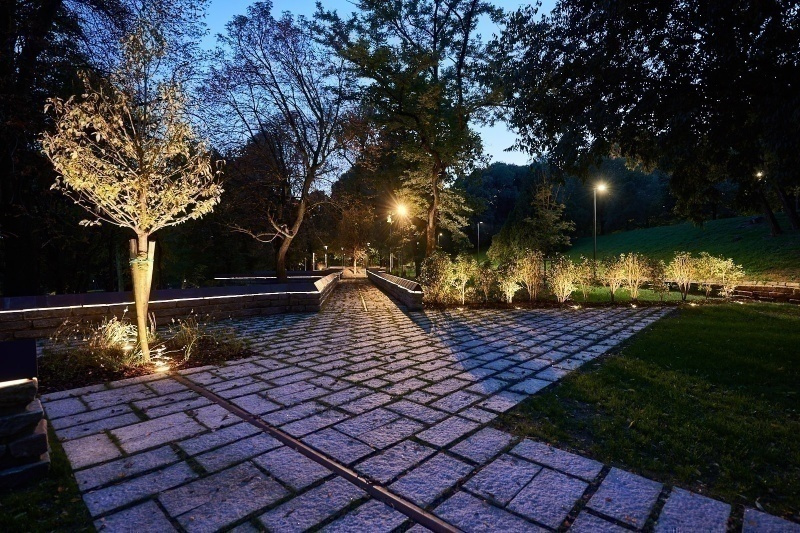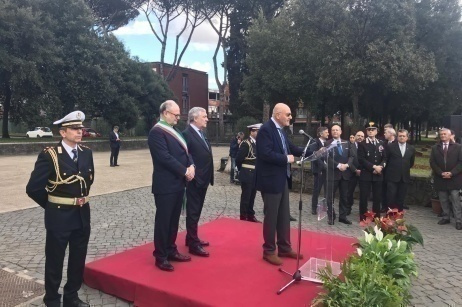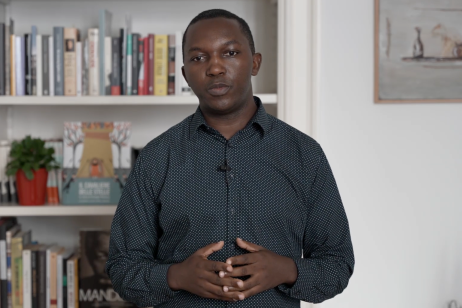It is important to reflect on the pedagogical and educational purpose of the Gardens of the Righteous for the moral growth of society.
We may call it the Gariwo method: a new bottom-up experience aimed at making young people and citizens the protagonists of human and international affairs, in a framework where a passive spectator behaviour almost always prevails. An attitude similar, for example, to that of those who cannot do anything to change the result of matches even though they passionately support their football team. A behaviour we replicate in so many ways in our lives, when we imagine that it is sufficient to cheer and hope that things turn out for the best. This is what happens on social media where people believe that a like for a trampled right, or even a form of indignation over failed rescue at sea, can change things.
Virtual protest is a way of having a clear conscience, without being committed and putting oneself out there. We can therefore be on the side of victims without ever dealing with them personally. As it is often the case, unfortunately, on Holocaust Remembrance Days, when it is ritually easy to take a stand against Nazism and the extermination of Jews, but not to question our responsibilities in today’s world.
It is worth recalling the etymology of the Latin word commitment, derived from pignus (pledge). According to Roman jurist Gaius (died in 180 A.D.), pignus comes from fist, since «one gives things with his/her hands».
Therefore, mere intention, such as the one we show on social media, is not enough: putting oneself in the dimension of acting means getting one’s hands dirty. As the Polish Stanisław Jerzy Lec wrote in a famous aphorism in Unkempt Thoughts (1957): «He had a clear conscience. Never used it». This happens to those who feel beautiful souls without doing and risking anything, instead of using their hands to set actions in motion.
How is it, then, that the Gardens of the Righteous educate people to action and personal involvement?
The starting point is the definition of their mission. The Gardens are the cultural tool that brings to life in society the two great resolutions approved by the United Nations after the catastrophe of the Second World War, seeking to give political foundations to the concept of «never again» and respect for human plurality. This was the intention of the Convention on the Prevention and Punishment of the Crime of Genocide proposed by Raphael Lemkin in 1948 and of the Universal Declaration of Human Rights, fostered by Eleanor Roosevelt, which called on international institutions to take on this moral and political commitment.
We are aware of the delays and political vetoes of States that have shirked shared commitment in order to cover their responsibilities from time to time, but it is a fact that the two resolutions have never been embodied in the active life of societies. Indeed, they have not found a recognisable physical place that would enhance their function with tasks to be fulfilled, from generation to generation, before any possible violent drift. This is due to the fact that new commandments envisaged (do not commit genocide and protect the human person in his/her various expressions) can only be claimed internationally provided a bottom-up movement is started that supports them.
The Gardens of the Righteous are therefore first and foremost a civic temple, a sort of permanent agora in the various countries, spurring societies to play a proactive role in enforcing the two UN resolutions.
The methodology of this mission of the Gardens is based on two elements: the transmission of knowledge and the development of empathy (which is the prerequisite for proactive engagement).
Knowledge of what is happening all around the world, inside and outside our borders, is crucial for visitors to the Gardens to act as citizens of the world. For we know indeed that ignorance, political denialism and censorship of information are the mechanism that has enabled autocracies and dictatorships to conceal their crimes from the Holocaust to new persecutions.
The Gardens, therefore, inform society about the state of the world to break indifference that is based on non-knowledge.
If one does not know, one cannot act. First and foremost, the Gardens constantly call for knowledge of denied and violated rights, from Iran to Afghanistan, to political repression in Russia, to new wars and discrimination in various parts of the world, to the effects of climate change that jeopardise the survival of the planet. This is why it is necessary for the best scholars and educators to participate in the life of the Gardens, as cognitive and moral points of reference, who can pass on their knowledge to society. Gariwo Foundation requested the Italian Parliament to have an annual report issued on the state of human rights and the emergence of new genocides. Such knowledge of the state of the world could be conveyed by the activity of the Gardens, which should be directed to seek out the Righteous of our time in situations of crisis. For example, empathy towards an Iranian or Afghan woman who fights for her emancipation from religious power triggers our mind’s desire for knowledge of a context that is very distant from our own.
Secondly, the task of the Gardens is to ignite, as Vassilji Grossman wrote, «what is human in man», by proposing to citizens to become moral and individual banks in the face of possible new abuses. These new places of education to responsibility link knowledge to virtue as in the famous passage of The Divine Comedy, «Consider your seed. You were not formed to live like brutes, but to follow virtue and knowledge».
Actual knowledge is indeed that which transforms us and determines our actions. Knowledge without commitment and activity is not actual knowledge.
Ettore Majorana, as Vito Mancuso recalls, was a theoretical physicist of great depth, just like Martin Heidegger was a remarkable philosopher. However, despite their extraordinary knowledge, both of them became admirers and supporters of Nazism: two great ethical failures. Paradoxically, as Vassilji Grossman wrote, humble individuals, who are less intellectually equipped, happen to get carried away by a rush of senseless goodness in the face of abuse of power. They are not only actors of justice in this world, they also prove that they know how to thoroughly practise their knowledge; unlike certain narcissistic and indifferent scholars who would have the tools to act but only think of their own egos, as Milena Jesenská observed in Prague in the 1930s, an extraordinary woman beloved by Kafka, who was among the first to realise the Nazi drift and the resignation of society.
How does one activate the dormant mechanism of conscience? How does one educate to virtue?
The originality of the Gardens of the Righteous lies in that, as they push society to seek out and express gratitude to the Righteous of the past and of our time.
The dissemination of human stories of resistance and responsibility has a therapeutic effect in that it shows that evil is not determined a priori and that every human being has the opportunity to choose everywhere.
Étienne de La Boétie, a close friend of Montaigne, wrote in Voluntary Servitude that any dictator lives with the consent of those who say yes to him/her, but if suddenly someone begins to distance themselves from him/her and others follow them, the autocrat gradually becomes naked and loses arrogance and power. This is the greatest hope in any dark age, because it then becomes clear that everyone has the power, if they want it and are determined to do so, to push history in a good direction.
There is also an important methodology in public communication of the stories of the Righteous. Their stories are humanized, by showing without reticence the personal limitations of each Righteous individual. By explaining that they are neither saints nor heroes, they are human beings like all of us, one emphasises that possible Good is within everyone’s reach. Conversely, idealising the Righteous, as it often happens in public narratives, creates untrue and unattainable myths.
It is a serious mistake to set a sharp divide between the Righteous and the real world, as it was totally wrong to present executioners in extermination camps as mere monsters and not as ordinary people who had made choices, as Primo Levi observed. He considered that every individual, by his/her very nature, could be both a Righteous and a persecutor. If this element is not grasped, the understanding of the triviality of good and evil escapes us.
The method of public research is also important.
Appreciation of the stories of the Righteous is not a top-down imposition programmed by default, it stems from a democratic process in which society is spurred to become a seeker and fisherman of hidden pearls of good, as Walter Benjamin foresaw. The public is thus educated to search for and appreciate stories of good. When one searches for and appreciates good, one indirectly completes a journey of spiritual self-education.
Moshe Bejski, for 25 years the leading spirit of the Garden of the Righteous in Jerusalem, used to tell me that every time he discovered a new rescue story he felt the pleasure and joy of belonging to the human race, even though he had seen the abyss of inhumanity at Auschwitz camp. The ethical component was strengthened in him, like the pleasure of exercising the profession of a man every morning recounted by Marcus Aurelius in his Reminiscences.
The mechanism of the search for moral individuals of all times that unites students, educators, teachers and administrators has then its peak moment in the value stimulus towards public opinion.
When trees are planted and selected Righteous are made known from time to time, and new stories are discovered, society is prompted to exercise a feeling of gratitude towards those who have defended humanity. This is how one conveys to the public, who takes part in the ceremony at the Garden, the feeling that everyone has received a priceless gift from those who have preserved human dignity. Grasping the value of this gift that has enabled everyone to live in a better world can trigger a mechanism of reciprocity. As we have received from others, from previous generations, we in turn are stimulated to take up our responsibility towards future ones in an unbroken moral relay. Like in a footrace, we are handed a baton that in turn we can, if we take responsibility, pass on to those who will follow us in the exercise of our virtue.
The Garden of the Righteous addresses society through a mechanism of indirect communication, as it was observed by classical philosophical scholar Pierre Hadot, who reflected on the modalities of persuasive education. Nobody is imposed a moral or behavioural directive, it is storytelling that stimulates people to think for themselves and empathically identify with those who have acted as worthy individuals in difficult circumstances.
The call to goodness is not obeyed like a military order, one can only get there through a lonely journey of moral purification. Each one of us always acts when he/she is convinced, not when someone imposes it, even if for a just cause. Indirect persuasion that activates the freedom of individual choice is the prerequisite for non-totalitarian communication. And it is precisely such original mode that proves to be a possible antidote to political practices used in autocratic systems, where citizens are accustomed to submission and to acting with no awareness. When citizens become accustomed to thinking for themselves, with their own conscience and judgement, they do not become obedient beings who can be easily manipulated.
Through this logic we maintain that the Day of the Righteous of Humanity, unlike other celebrations, is never imposed, it is always a choice of those who wish to celebrate it.
The Gardens of the Righteous only have strength if they involve authenticity and participation. If they turned into a repetitive ritual only imposed by law, they would immediately lose their educational function.
Through its practices, the Garden conveys the idea that doing good towards others does not imply any deprivation and renunciation, it is the realisation of human fullness. The stories of the Righteous are often perceived as elitist events of those who decided to sacrifice themselves for others. This is a distorted vision that mistakes the victims for the Righteous and makes one believe that suffering is the mandatory journey of the Righteous. It is not the case. People who do their best to help human beings do so first of all because they have understood that doing good is key to feeling better about themselves and finding a form of happiness. Becoming the builders of justice in one’s own sphere means feeling fulfilled. The secret of the Righteous is exactly this.
In recounting the stories of the Righteous, it is important to focus on the characteristics that drive individuals to undertake courageous actions and even to risk their lives. «I could not help doing it» Giorgio Perlasca explained when asked about the reason for his efforts in Budapest to save Jews at the Spanish embassy by posing as a consul. It was the same motivation as that of Dimitar Peshev in Bulgaria, who persuaded the pro-Fascist deputies of his country to block the ongoing deportation by means of a moral letter, in which he argued that remaining indifferent would come at a heavy cost to one’s personal condition and the reputation of one’s country.
Investigating hidden motivations that drive individuals to do good towards the others is key to creating a journey of emulation in society. Discovering their inner joy and happiness is just as important as telling their deeds.
This methodology for discovering good within oneself by practising good towards the others is not only important for one’s own moral growth, it can become a tool to educate others, especially those who take the wrong path.
Good has two faces, as Baruch Spinoza understood. It is the exercise of one’s own virtue, but also the task of becoming an educator for those who make mistakes and are taking a dangerous path towards other human beings. Thus one always makes the world better in two ways. By acting directly and then by correcting others.
If we become aware that evil done to others is evil done to ourselves, we have the opportunity of showing those who do wrong that by acting in a certain way they are contradicting themselves and that therefore it is not convenient for them to become persecutors who exercise violence towards other human beings.
Socrates perfectly framed the issue when he stated that it is better to be wronged than to do wrong. When all is said and done, those who humiliate the others, hurt them, use violence, become persecutors, a cog in an oppressive system, abusers, to the point of being executioners, cannot be happy individuals. Domination over others and the exercise of violence damages one’s personality and makes one live a distorted existence. At the concentration camp, with her extraordinary sensitivity, Etty Hillesum felt sorry for the unhappiness of her captor.
Thus, through the practices of the Gardens, youngsters can be taught to correct the behaviour of those peers who have bullying attitudes towards the weaker, who show contempt towards those who are different, indulge in racism and even use violence towards others. These are the first signs of evil in everyday life, which can lead to more serious events. With persuasion and conviction one has the opportunity of stopping, from its genesis, a mechanism that could lead, under certain circumstances, to extreme evil.
But how does one teach people to overcome fear, not making them feel alone in a personal commitment to injustice?
We all feel the weight of our fragility and inadequacy. We mostly think that one of our actions may be useless, ineffective and not followed by anyone. The actual miracle of the Gardens of the Righteous is that they show, with trees dedicated to good individuals of all times, that «a social chain of brotherhood and solidarity, of which everyone can be a part» exists, as Giacomo Leopardi wrote in Wild Broom.
The fragility of individuals is overcome by participating in a network that generates, as Vaclav Havel, the founder of Charter 77, observed, the power of the powerless who together can shake the world.
The Gardens of the Righteous make the great chain of good visible to all and put us in relation with the women and men of all times and places who, in different ways, have shown us the beauty of being good individuals.
The Gardens of the Righteous are also a therapy against our loneliness.








